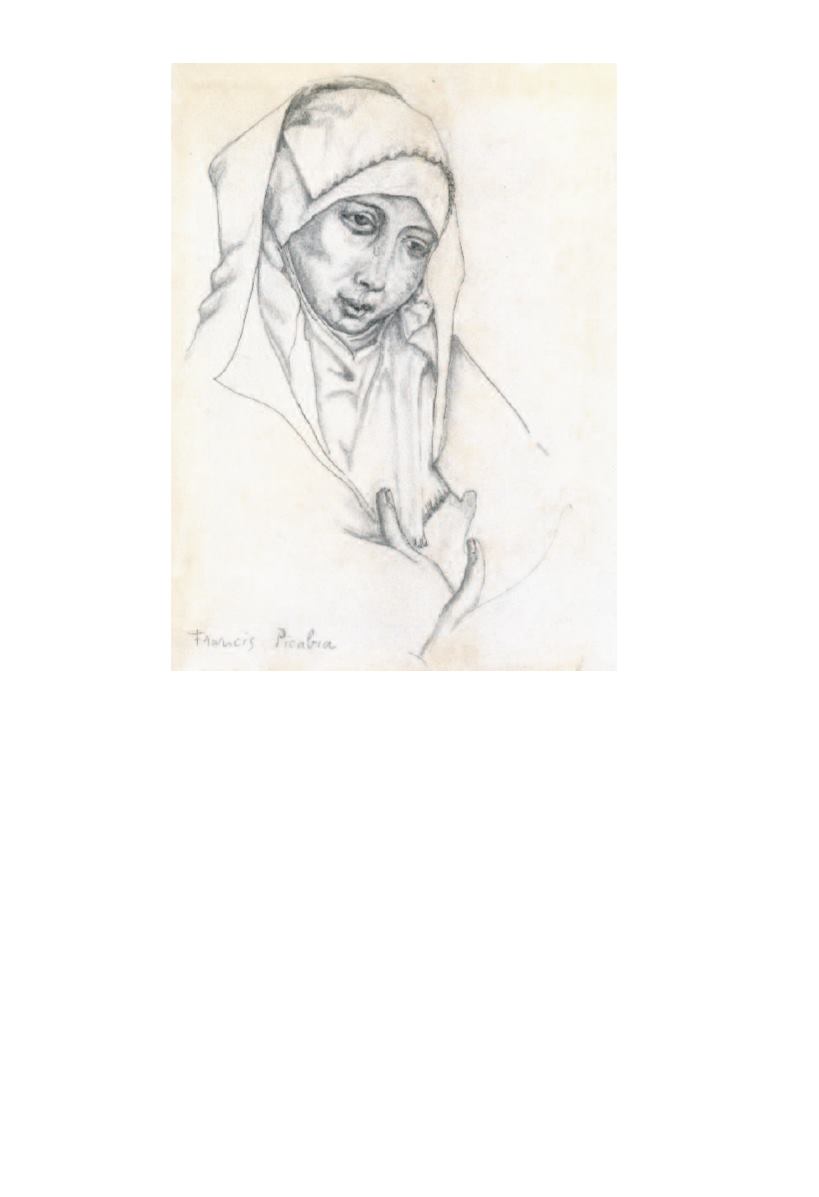
109 FRANCIS PICABIA
Mater Dolorossa
.
Pencil and chalk on cream wove paper, early 1900s. 360x322 mm; 14x12
3
/
4
inches. Signed
in pencil, lower left recto.
Based on the left hand side of a diptych painting depicting the Virgin Mary (as Mater
Dolorossa) and Christ (as the Man of Sorrows) by an unknown Netherlandish master, last
quarter of the 15th century, now in the Groeninge Museum, Bruges (inventory number
0000.GROo201.I-0202.I).
Picabia (1879-1953) copied the old masters from an early age, even before attending art
school at the École Nationale Supérieure des Arts Décoratifs, Paris, in the late 1890s. Also
influenced by the fluid, neo-Impressionist style of Sisley and Signac, he gravitated toward
Cubism by 1910 and fell in with the Puteaux Group, which met at the studio of Jacques
Villon in Puteaux, in the suburbs of Paris, and also included Marcel Duchamp, Albert
Gleizes, Roger de la Fresnaye, Fernand Léger and Jean Metzinger.
In 1913, Picabia was the only member of the Cubist group to personally attend the Armory
Show, and Alfred Stieglitz gave him a solo exhibition at his 291 Gallery in NewYork. In 1915,
Stieglitz’s gallery devoted an entire issue of it’s avant-garde magazine “291” to Picabia’s work.
Picabia exhibited
The Dance at the Spring
, oil on canvas, 1912, a Proto-Cubist painting that
is now in the Philadelphia Museum of Art, at the Armory Show.
[10,000/15,000]


